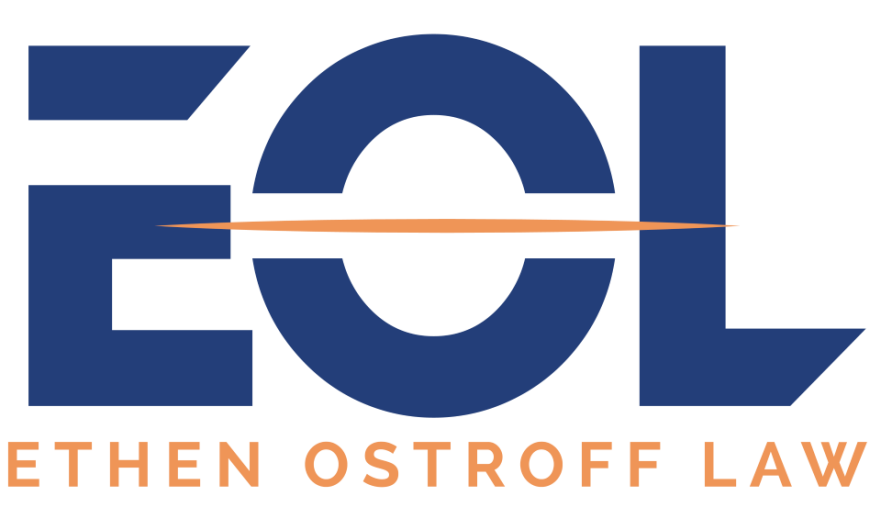Crashworthiness Litigation: Safeguarding Lives and Pursuing Justice
In the field of personal injury law, “crashworthiness” is a crucial concept, impacting passenger safety and vehicle integrity. It goes beyond accident prevention, focusing on a vehicle’s capacity to protect occupants during collisions. As accidents from inadequate crashworthiness standards contribute significantly to personal injuries, understanding and championing this concept is vital. At Ethen Ostroff Law, we specialize in deftly navigating crashworthiness litigation, offering steadfast support to those affected by accidents due to insufficient safety standards. In the following sections, we explore the definition of crashworthiness, its safety implications, and highlight our firm’s commitment to assisting individuals in seeking justice and rightful compensation.
What is Crashworthiness?
According to the National Highway Safety Administration, crashworthiness is defined as “occupant protection to reduce the number of fatal and serious injuries that occur in the United States each year.” This broad protection encompasses research in various areas, including airbags, alternative fuel sources, frontal crash protection, hand controls, heavy truck safety, motorcycle helmets, rear-seat occupant safety, and vehicle fire safety. Crashworthiness transcends accident prevention; it is about minimizing injuries and damages when a collision becomes inevitable. This fundamental concept serves as the cornerstone of numerous personal injury cases, especially those involving defective vehicles.
Several examples of crashworthiness features in cars include seat backs, door latches, laminated window glass, crumple zones to reduce impact force, seat belts, and restraint systems that significantly decrease the risk of fatal injuries. Energy distribution design is also crucial in lessening collision force, and airbags, including side impact protection, aim to minimize occupant injuries and prevent ejection from the vehicle.
Quantifying the exact percentage of road accidents caused by crashworthiness failure is challenging. While studies show that defects in vehicles, like brakes and tires, contribute to a significant number of accidents—around 6%, according to some research—specific statistics on crashworthiness failure are elusive. Moreover, a detailed analysis of 997 crashes in six countries revealed that 72% of accidents involve factors related to road user errors. While these statistics may not directly address crashworthiness failure, they underscore the pivotal role of crashworthiness in mitigating injury severity and overall accident risk.
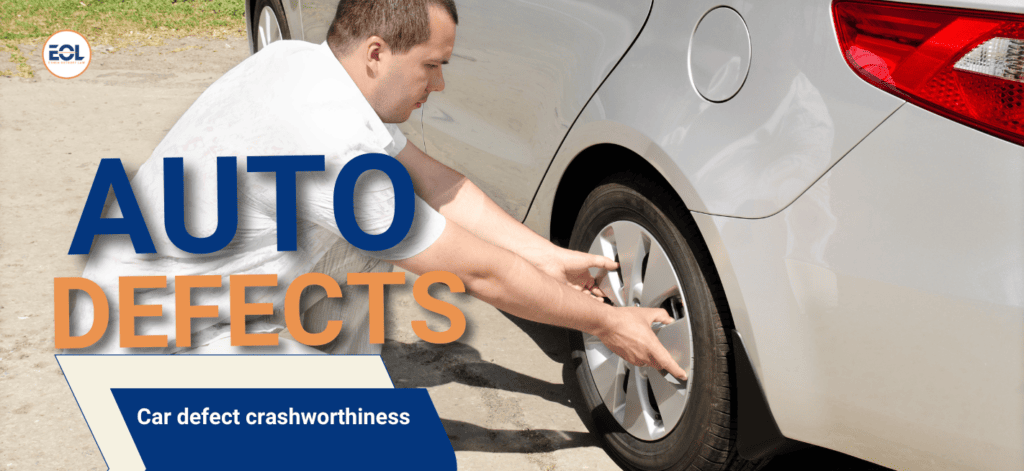
Crashworthiness Testing: A Road Safety Check
Crashworthiness testing is a critical component in ensuring your safety on the road. It determines how well a vehicle can protect you in an accident, following the National Highway Traffic Safety Administration’s Federal Motor Vehicle Safety Standards (FMVSS). These standards cover essentials like occupant protection, structural integrity, and critical safety features. Complying with FMVSS is a legal must for manufacturers. During crashworthiness testing, a vehicle undergoes simulated crash scenarios, with results compared against FMVSS criteria.
Crash Testing Methods
Crashworthiness testing uses diverse crash tests to replicate real accidents, evaluating how well a vehicle shields its occupants. Key tests include:
- Frontal crash tests: Simulating head-on collisions to assess a vehicle’s front structure’s ability to absorb and manage impact forces.
- Pedestrian safety rests: Examining a vehicle’s design to minimize injuries to pedestrians in case of a collision.
- Rollover tests: Assessing a vehicle’s stability and roof strength to determine rollover likelihood and protection level.
- Side-impact crash tests: Mimicking T-bone collisions to gauge a vehicle’s ability to protect occupants from lateral impacts.
- Whiplash protection rests: Evaluating headrests and seats’ effectiveness in preventing whiplash injuries during rear-end collisions.
Critical Role of Crashworthiness Testing
Crashworthiness testing goes beyond regulations; it is vital for road safety. These tests reveal a vehicle’s structural integrity, safety feature effectiveness, and its ability to protect occupants in real-world accidents. For consumers, grasping a vehicle’s crashworthiness rating is key for purchase decisions, signifying enhanced safety and protection in a crash.
Crashworthiness Standards: Vital Components
Crashworthiness standards ensure comprehensive safety by incorporating the following key components critical for occupant protection, vehicle structure, and additional safety measures:
Occupant Protection
- Frontal Crash Protection (FMVSS No. 208): Addresses head-on collisions, mandating airbags, seat belts, and restraints for enhanced occupant safety.
- Side Impact Protection (FMVSS No. 214): Sets standards for side airbags and structural enhancements to minimize injuries in side-impact crashes.
Vehicle Structure and Integrity
- Roof Crush Resistance (FMVSS No. 216): Ensures vehicles maintain structural integrity during rollover accidents.
- Frontal Impact Protection (FMVSS No. 208): Addresses structural design to absorb and distribute impact forces, preventing intrusion into the passenger compartment.
Additional Safety Measures
- Electronic Stability Control (FMVSS No. 126): Mandates electronic stability control systems to prevent skidding and enhance overall vehicle stability.
- Pedestrian Protection (FMVSS No. 201): Sets standards for design elements to reduce injuries to pedestrians struck by a vehicle.
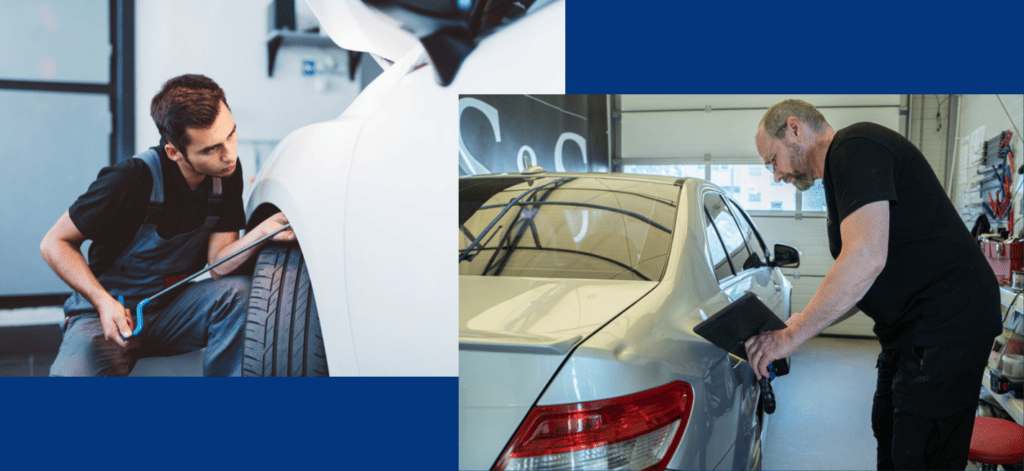
Crashworthiness Defects
Crashworthiness defects, often silent culprits in personal injury law, pose serious threats to vehicle safety. Navigating crashworthiness litigation requires an understanding of the various defect categories that can lead to devastating consequences:
Design Defects
- Inadequate crumple zones: Design flaws in crumple zones compromise their ability to absorb collision forces effectively.
- Weak roof structures: Structural design flaws in roofs can lead to catastrophic injuries during rollover accidents.
Manufacturing Defects
- Inconsistent safety feature performance: Manufacturing defects can lead to variations in safety feature performance within the same production line.
- Material defects: Substandard materials in critical components compromise the overall crashworthiness of a vehicle.
- Welding deficiencies: Poorly executed welds during manufacturing may compromise the vehicle’s structural integrity.
Marketing Defects
- Failure to warn of rollover risks: Marketing defects occur when manufacturers neglect to warn about specific risks, such as rollovers.
- Lack of crash test disclosures: Some manufacturers may withhold or manipulate crash test information, impacting consumers’ ability to make informed decisions.
- Misleading Safety Claims: False or exaggerated safety claims create a false sense of security, potentially putting consumers at risk.
Safety Features
- Airbag failures: Design defects may cause airbag failures, including late deployment, overinflation, or failure to deploy, leaving occupants vulnerable.
- Seat belt malfunctions: Design defects in seat belts, such as faulty latching mechanisms, inertial reel failures, or weak webbing, undermine occupant restraint.
Ensuring Crashworthiness: The Critical Role of Vehicle Manufacturers
Vehicle manufacturers hold a pivotal responsibility in ensuring crashworthiness. Their duty is to craft products that offer reasonable protection in various accident scenarios. This involves guaranteeing the vehicle’s structural strength, ability to endure crash forces, and providing ample protection for occupants.
Product Liability and the Crashworthiness Doctrine
The Crashworthiness Doctrine is pivotal in product liability law, highlighting manufacturers’ responsibility to design products that ensure occupant safety during accidents. In cases of defective products causing harm, the Crashworthiness Doctrine becomes crucial, applying to various vehicles. If a product is found defective and leads to injury or death, manufacturers may be held liable under product liability law, with the crashworthiness doctrine assessing the adequacy of the vehicle’s design and construction for occupant protection.
Seeking Justice in a Crashworthiness Case?
If you have suffered injuries due to a poorly designed car that failed crashworthiness tests, potentially unfit for the market, you might have a basis for an injury claim against the automaker. Reach out to a crashworthiness attorney at Ethen Ostroff Law for assistance in pursuing the justice you deserve. Call us today or complete our free case evaluation form to speak with an attorney, gaining insights into whether you have a viable case.
Streamlining Crashworthiness Claims
Crashworthiness litigation, a subset of product liability claims originating from car accidents, present both professional challenges and the potential to profoundly impact the lives of catastrophically injured individuals. These claims encompass nine primary categories:
- 15 passenger vans
- Airbag deployment
- Child safety seats
- Collision-avoidance systems
- Fuel tank design
- Rollover/roof crush/vehicle stability
- Seat design/restraints
- Structural integrity
- Tire defects
Noteworthy types of crashworthiness claims that have undergone rigorous scrutiny and often entered crashworthiness litigation include:
- Door latch failure, posing risks of doors opening during a crash.
- Malfunctions in seatbelts or airbags, causing passengers to move forward into the dashboard or windshield.
- Roof crush or intrusion of body panels into the passenger space.
- Seat back collapse in a rear collision, leading to potential harm to individuals in the rear seat.
- Uncontrolled airbag deployment, resulting in injuries to passengers.
- Window glass blowout, causing crush injuries to limbs outside the car’s passenger compartment.
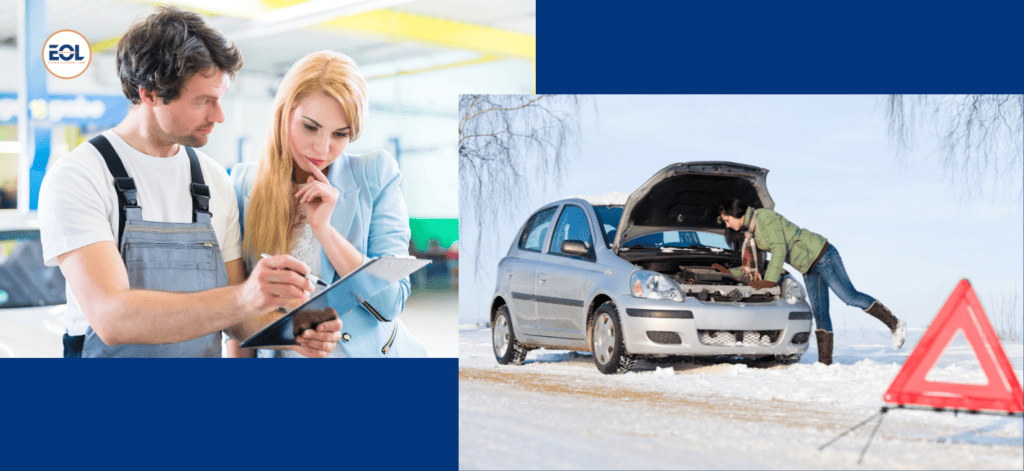
Crashworthiness Legal Scenarios Ethen Ostroff Law Handles
Ethen Ostroff Law is proficient in managing diverse crashworthiness litigation, covering situations such as:
- Airbag failure: Dealing with cases where airbags fail to deploy or may explosively malfunction.
- Auto glass injuries: Addressing incidents where car windows fail to break safely, causing injuries from sharp glass edges, indicating a potential defect.
- Gas tank fires: Investigating collisions leading to gas tank leaks or ignitions, checking if the fuel system design adheres to safety standards.
- Roof crush: Evaluating vehicles with poorly designed roofs prone to crumpling, especially during rollovers, forming the foundation for a strong legal case.
- Seatback failure: Managing cases involving minivan front seats collapsing backward during a crash, causing harm to occupants.
- Seatbelt failure: Investigating defective seatbelts that fail to secure properly, rendering them ineffective in protecting occupants during a crash.
- SUV rollover accidents: Handling critiques of SUVs for elevated rollover risks due to their high center of gravity during turns or side-impact collisions.
- Tire failures: Addressing cases where tire defects cause failures or bursts while in motion, leading to loss of control and potentially severe accidents.
Establishing Liability in Crashworthiness Cases
In crashworthiness litigation, proving liability involves a detailed examination of key factors, including:
- Deviation from specifications: Demonstrating that the vehicle deviates from the manufacturer’s specifications is pivotal in proving manufacturing defects, strengthening the negligence case.
- Expert testimony: Expert testimony from qualified professionals in automotive engineering, accident reconstruction, and safety standards plays a crucial role in establishing liability by offering insights into defects, safety impacts, and foreseeability of risks.
- Forensic crash analysis: Expert witnesses can conduct a forensic analysis of the crash, revealing insights into safety feature performance, structural damage, and signs of manufacturing or design defects.
- Identifying design flaws: Establishing liability often starts with proving the existence of design defects through a thorough analysis of the vehicle’s design and engineering, highlighting inadequate safety features or structural flaws.
- Impact on consumer behavior: Proving that lack of warnings or misleading information influenced consumer behavior strengthens the argument for liability, emphasizing the need for proper information disclosure.
- Inadequate warnings: For marketing defects, emphasis shifts to whether the manufacturer provided sufficient warnings or presented misleading information about the vehicle’s safety, showing a failure to disclose known risks.
- Risk-benefit analysis: Courts use a risk-benefit analysis, weighing design defect risks against benefits. If risks outweigh benefits, it strengthens the argument for negligence.
- Traceability of defects: In manufacturing defect cases, liability hinges on establishing a direct link between the defect and the manufacturing process, involving the analysis of production records, quality control, and expert testimony.
Filing a Crashworthiness Lawsuit
Seeking justice after a defective vehicle causes injuries involves crucial steps. At Ethen Ostroff Law, we specialize in guiding individuals through the process:
- Seek medical attention: Prioritize health by seeking immediate medical care for injuries. This not only ensures well-being but establishes a documented record crucial for building a strong case.
- Document the accident: Preserve evidence by documenting the accident scene, vehicles, damages, and gathering witness information. This creates a foundation for your case.
- Preserve the vehicle: Retain the defective vehicle without alterations for a thorough investigation. Avoid repairs until experts inspect it for design or manufacturing defects.
- Consult with an attorney: Schedule a consultation with an experienced crashworthiness attorney like Ethen Ostroff Law, providing details about the accident and injuries.
- Investigation and case building: Your attorney initiates a comprehensive investigation, employing experts in relevant fields to identify defects in the vehicle’s design or manufacturing.
- Notice and filing: Your attorney handles notice requirements, notifying the manufacturer before filing a crashworthiness lawsuit. Subsequently, a formal complaint is filed.
- Discovery phase: Both parties exchange relevant case information, including documents and witness statements. Expert witnesses may provide sworn testimony during this phase.
- Negotiation or mediation: Before trial, your attorney engages in negotiations or mediation to explore settlement possibilities, aiming to resolve the case without a trial.
- Trial: If a settlement is not reached, the case proceeds to trial. Your attorney presents evidence, calls witnesses, and makes legal arguments to establish liability and seek compensation.
- Verdict and compensation: After presenting the case, the court renders a verdict. If in your favor, compensation is determined based on damage incurred.
Compensation in Crashworthiness Litigation
In the aftermath of a crash involving a defective vehicle, pursuing compensation involves various types:
Economic Damages
- Medical expenses: Covers hospitalization, surgeries, medications, rehabilitation, and necessary medical treatments. Documentation is crucial for determining owed compensation.
- Lost wages: Accounts for missed workdays or long-term disability cover the income victims would have earned without injuries. It may include future earning capacity if injuries result in reduced work ability.
- Property damage: Extends to repair or replacement of the damaged vehicle, aiming to restore victims to their financial position before the crash.
Non-economic Damages
- Emotional distress: Recognizes the psychological toll, addressing mental anguish, anxiety, depression, and other emotional hardships resulting from the traumatic experience.
- Loss of consortium: Addresses strained familial relationships, compensating for the loss of companionship, support, and services.
- Pain and suffering: Compensates victims for the immeasurable physical and emotional pain experienced due to the crash.
- Punitive damages: In some cases, punitive damages may be pursued to punish egregious negligence, deter future misconduct, and hold manufacturers accountable for defective vehicles.
Importance of Ethen Ostroff Law in Defective Vehicle Cases
Handling personal injury cases involving defective vehicles requires a grasp of crashworthiness. At Ethen Ostroff Law, our dedicated expertise guides you through the intricacies of crashworthiness litigation. Our experienced legal team is prepared to protect your rights and ensure justice. Tailoring assistance to your situation, we thoroughly assess damages, considering economic and non-economic factors. Our aim is to secure maximum compensation for victims rebuilding their lives after a traumatic incident. If you or a loved one suffered injuries due to a defective vehicle, contact Ethen Ostroff Law for a free consultation.
